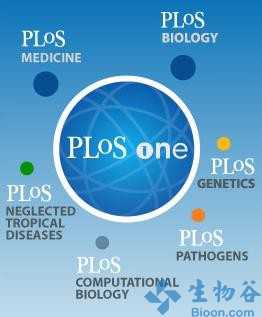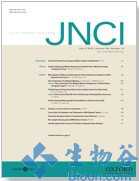PLoS ONE:揭示克罗恩氏病患者肠道组织纤维化的分子机制
2013-02-17 T.Shen 生物谷
近日,刊登在国际杂志PLoS ONE上的一篇研究报告中,来自布里斯托大学的研究者通过研究揭示了,蛋白质IL-13或许是克罗恩氏病患者发展成为纤维化的关键,这将帮助研究者开发新型的药物来治疗克罗恩氏病患者。 克罗恩氏病是一种慢性炎性胃肠道疾病,目前并没有有效的治愈方法。克罗恩氏病主要的并发症之一就是肠壁纤维化的形成,纤维化的形成会使得肠道失去运动型,最终使得肠道变得狭窄以至于食物都不能顺利通过。
近日,刊登在国际杂志PLoS ONE上的一篇研究报告中,来自布里斯托大学的研究者通过研究揭示了,蛋白质IL-13或许是克罗恩氏病患者发展成为纤维化的关键,这将帮助研究者开发新型的药物来治疗克罗恩氏病患者。
克罗恩氏病是一种慢性炎性胃肠道疾病,目前并没有有效的治愈方法。克罗恩氏病主要的并发症之一就是肠壁纤维化的形成,纤维化的形成会使得肠道失去运动型,最终使得肠道变得狭窄以至于食物都不能顺利通过。
当肠道组织愈合过程中,蛋白质IL-13过多就会引发纤维化的形成。研究者在文中发现,相比正常肠道组织,克罗恩氏病患者的纤维化肠道组织中胶原的合成会增加,而且胶原沉积失去了控制。研究者认为,这和可溶解的白细胞介素13(IL-13)有直接关系,此前研究认为,IL-13可以促进肺部、肝脏以及肾脏纤维化的形成。
研究者发现克罗恩氏病患者纤维化的肠道中IL-13水平较高,而且实验结果显示,IL-13可以降低必要的因子来抑制不合适胶原的沉积。研究者在肠道组织中发现了一种新型的产生IL-13的细胞,尤其是在纤维化的肌肉组织当中水平较高,研究者认为这些细胞是肠道组织纤维化的“凶手”。因此理解纤维化的发生机制对于开发新型疗法至关重要。
许多纤维化病人都需要进行手术来治疗,早期的干预策略或许会预防严重的纤维化病症,但是抑制IL-13的产生或者产IL-13细胞的产生将是一种潜在的治疗疾病的手段。
尽管在治疗克罗恩氏病上科学家们取得了一些成绩,但是目前并没有有效的药物来治疗纤维化。在许多严重的纤维化病例中,最理想的手段莫过于通过外科手术切除的方法来治疗,而且有30%的患者一生中至少经历一次外科手术治疗。更为不幸的是,纤维变性组织的移除并不会抑制纤维化的复发,因此克罗恩氏病患者不得不进行重复的外科手术,最终导致肠道越来越短而不足以维持正常的功能。

doi:10.1371/journal.pone.0052332
PMC:
PMID:
Jennifer R. Bailey, Paul W. Bland equal contributor, John F. Tarlton equal contributor mail, Iain Peters, Moganaden Moorghen, Paul A. Sylvester, Christopher S. J. Probert, Christine V. Whiting
Background Fibrosis is a serious consequence of Crohn’s disease (CD), often necessitating surgical resection. We examined the hypothesis that IL-13 may promote collagen accumulation within the CD muscle microenvironment. Methods Factors potentially modulating collagen deposition were examined in intestinal tissue samples from fibrotic (f) CD and compared with cancer control (C), ulcerative colitis (UC) and uninvolved (u) CD. Mechanisms attributable to IL-13 were analysed using cell lines derived from uninvolved muscle tissue and tissue explants. Results In fCD muscle extracts, collagen synthesis was significantly increased compared to other groups, but MMP-2 was not co-ordinately increased. IL-13 transcripts were highest in fCD muscle compared to muscle from other groups. IL-13 receptor (R) α1 was expressed by intestinal muscle smooth muscle, nerve and KIR+ cells. Fibroblasts from intestinal muscle expressed Rα1, phosphorylated STAT6 in response to IL-13, and subsequently down-regulated MMP-2 and TNF-α-induced MMP-1 and MMP-9 synthesis. Cells with the phenotype KIR+CD45+CD56+/−CD3− were significantly increased in fCD muscle compared to all other groups, expressed Rα1 and membrane IL-13, and transcribed high levels of IL-13. In explanted CD muscle, these cells did not phosphorylate STAT6 in response to exogenous IL-13. Conclusions The data indicate that in fibrotic intestinal muscle of Crohn’s patients, the IL-13 pathway is stimulated, involving a novel population of infiltrating IL-13Rα1+, KIR+ innate lymphoid cells, producing IL-13 which inhibits fibroblast MMP synthesis. Consequently, matrix degradation is down-regulated and this leads to excessive collagen deposition.
本网站所有内容来源注明为“梅斯医学”或“MedSci原创”的文字、图片和音视频资料,版权均属于梅斯医学所有。非经授权,任何媒体、网站或个人不得转载,授权转载时须注明来源为“梅斯医学”。其它来源的文章系转载文章,或“梅斯号”自媒体发布的文章,仅系出于传递更多信息之目的,本站仅负责审核内容合规,其内容不代表本站立场,本站不负责内容的准确性和版权。如果存在侵权、或不希望被转载的媒体或个人可与我们联系,我们将立即进行删除处理。
在此留言












#Plos one#
46
#克罗恩氏病#
57